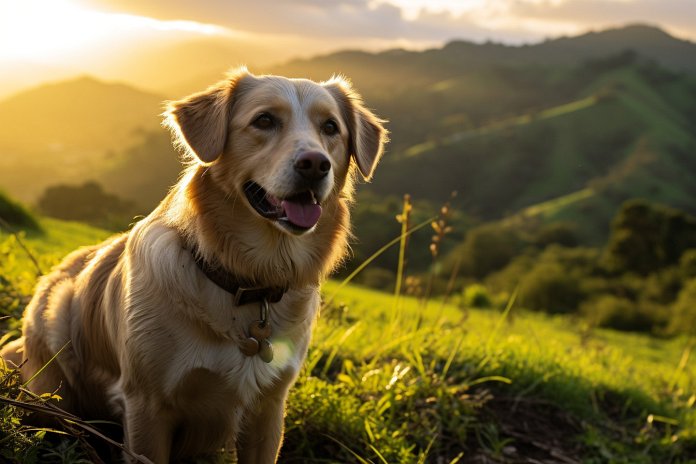
Dogs have a strong sense of smell and hearing, but how good is their vision? Contrary to popular belief, dogs are not color blind. However, they are not as good at seeing details from far away as humans are. Dogs excel at detecting motion from a distance, which is a positive for them.
Signs Your Dog is Focusing on Something in the Distance
Sometimes, dogs focus intently on something in the distance, leaving us wondering what they are looking at. Dogs and humans have different abilities when it comes to long-distance vision. If your own long-distance vision is not great, you can rely on your dog’s behavior to understand what they are doing. An intense gaze, raised ears, and alert body language are signs that your dog is focusing on something in the distance. They may also sniff the air or tilt their ears to gather more information.
Body Language
Your dog’s body language can reveal that they are looking at something in the distance. Signs to look out for include staring, alertness, head turning, and raised ears.
The Science of Dogs Seeing Long Distance
Dogs’ vision is influenced by various factors. Visual acuity measures how small a detail can be seen by the eye, and dogs have a visual acuity of 20/75. Motion detection is another aspect of their vision, where dogs are much better than humans at detecting motion from a distance. Dogs also have a wider field of vision compared to humans, with around 250 degrees of peripheral vision. Contrary to popular belief, dogs can see some colors, such as blue and gray. They also have superior night vision due to their large number of rods and a reflective feature called a tapetum.
Testing Your Dog’s Vision
If you suspect your dog’s vision is deteriorating, look for signs such as missing catches or not detecting toys from a distance. Other signs include clumsiness, fearfulness, disorientation, and a lack of playfulness. If you observe these signs, it’s best to take your dog to the vet for an eye check-up to ensure their vision loss is managed properly.
Dogs have a high sensitivity to motion from a distance, making them skilled at detecting movement.

Tips & Things to Know
1️⃣ Dogs have a high sensitivity to motion from a distance, so they may intensely focus on something far away. Look for signs such as an intense gaze, raised ears, and alert body language.
2️⃣ Dogs have a different field of vision than humans, with a wider peripheral vision of around 250 degrees compared to our 190 degrees. They also have better night vision due to their high number of rods and a reflective feature called the tapetum.
3️⃣ If you notice changes in your dog’s vision, such as difficulty catching objects or general clumsiness, it’s important to have their eyes checked by a vet. Managing their eyesight can help ensure a long and happy life for your pet.
Frequently Asked Questions, Answered ✅
1. Are dogs color blind?
– No, dogs are not color blind. They perceive green, yellow, and red as yellow, while they can also detect blue and gray.
2. How well can dogs see details from far away?
– Dogs are not as good as humans at resolving details from far away. Their visual acuity is tested to be around 20/75, meaning they can make out the details of a pattern from only 20 feet away that humans can see from 75 feet away.
3. What is a telltale sign that a dog is focusing on something in the distance?
– A dog may exhibit an intense gaze off into the distance, with their eyes focused closely on the object of interest. They may also display raised ears and alert body language.
4. How does a dog’s field of vision compare to humans?
– Dogs have a field of vision of around 250 degrees, while humans have a field of vision of about 190 degrees. This gives dogs approximately 60 degrees more peripheral vision than humans.
5. How do dogs have an advantage in low-light situations?
– Dogs have superior night vision due to their high number of rods, which detect light and dark. They also have larger pupils that let in more light, and a reflective feature called a tapetum that gives the eye a second chance to capture light.